Hampi- A Spiritual Quest!
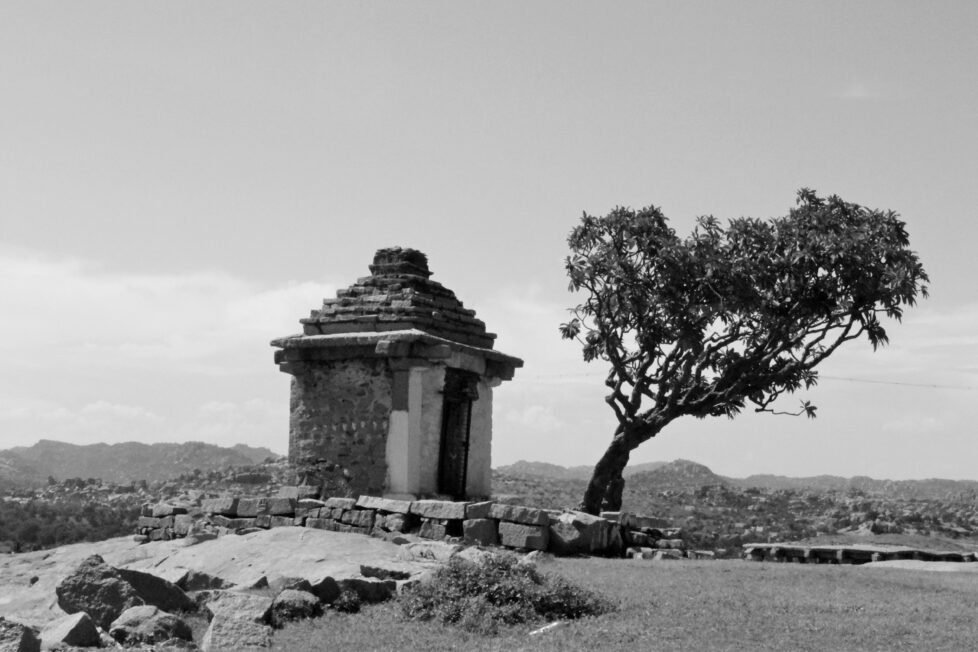

“Now more than ever do I realize that I will never be content with a sedentary life, that I will always be haunted by thoughts of a sun-drenched elsewhere.”
― Isabelle Eberhardt, The Nomad: The Diaries of Isabelle Eberhardt
It was that phase, when inspirational quotes failed to inspire the dispirited mind, when tuning in to the favorite music tracks was merely turning out to be a routine and reading the favorite author’s novels wasn’t really helping to soothe the fatigued soul. Fatigued, not because work was draining away my energy, fatigued because monotony is just not my cup of tea. And such terrible things a monotonous life can do to your personality.
So, it was time! It was time I let go, and set the soul free.
Then, there happened a dinner plan with this childhood friend. She, a huge History buff, I, a lover of culture, cuisines and places with a rich historical background. She, the intellectual and adventurous kinds, I not-so-brilliant but hugely adventurous kinds. We spoke, we discussed and an idea was born, how about we pair up and set out on an adventure all by ourselves? Too less chances of denial from the elders, because we were headstrong!
A lot of reading and research happened thereafter and a sober travel plan was designed, the place was a picturesque, rocky village in Karnataka, Hampi!
Bags were soon packed, maps were saved over phones, travel diaries were stuffed into the backpacks and thus, it was the start of a thrilling adventure!
We boarded the early morning train from Vasco-da-Gama, Goa and reached Hospet by the same afternoon. So many intellectual conversations happened throughout the journey, it was surely going to turn out to be an exhilarating escapade.
We were pleased with the warm welcome that Hampi extended. The weather seemed charming, rains had washed away the tiredness of the earth and the greens contended our weary eyes. So, what did it look like? A secret world of it’s own, we lost track of where we initially belonged to.
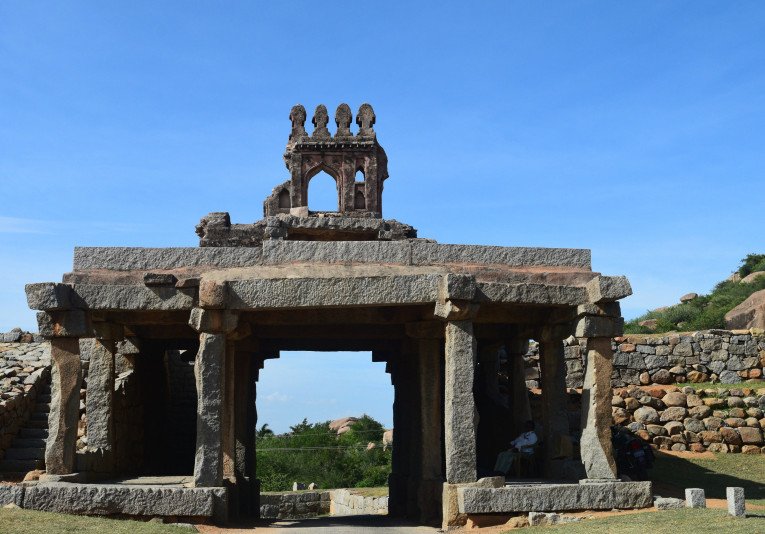
Setting foot on the Hampi soil was a mystic, other-worldly experience. Blue skies, unadulterated air, coconut grooves all over the place and huge rocks very magically balanced over one another. Something that would make you admire nature’s ways of leaving you awestruck! We jumped out of our vehicle only to tell ourselves that, yes this was no reverie!
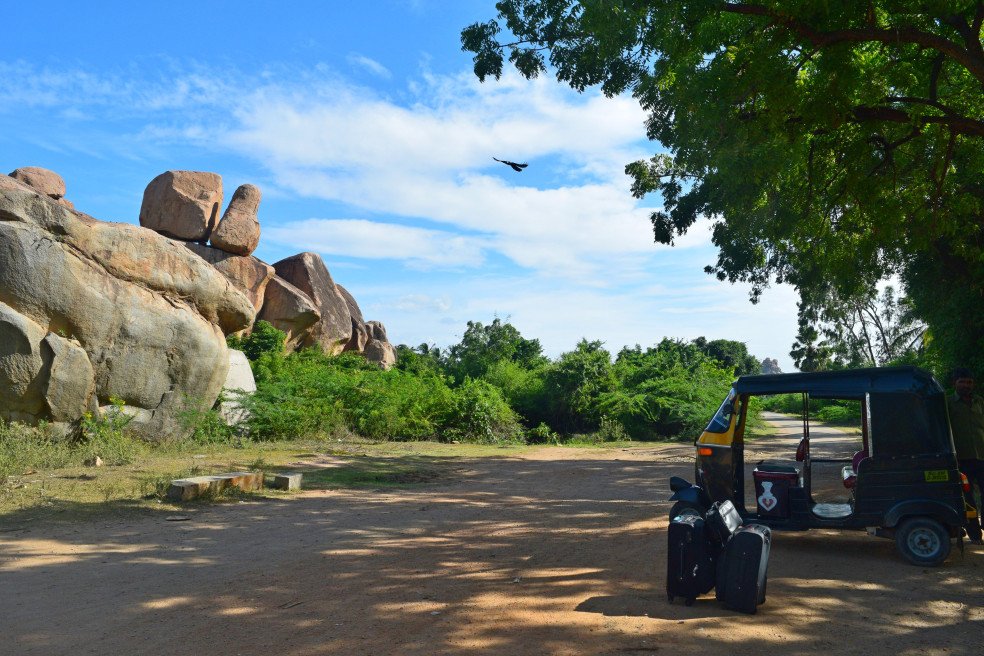
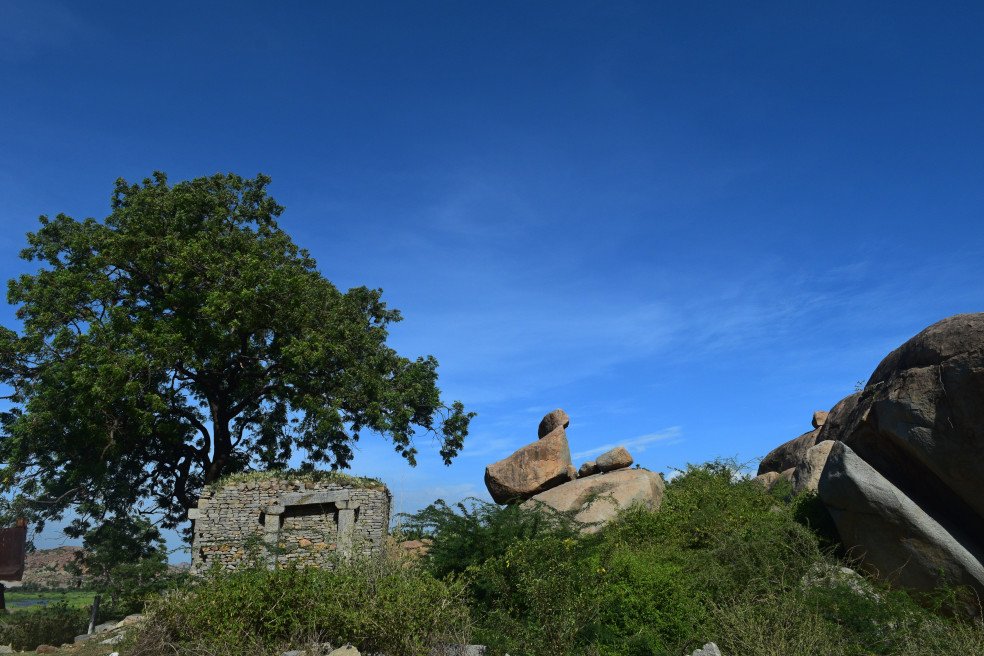
I closed my eyes gently and inhaled the fragrance of the slightly wet soil. And then, there was a sudden gush of energy in the body. I’ve had this experience in a very few places, that’s when you realize you have a connection with a place.
Our cottage was on the other side of the Tungabhadra river, the river that flows between an ancient and tiny village called Anegundi and the historical destination, Hampi. The ferry ride to Anegundi was another amusing experience.
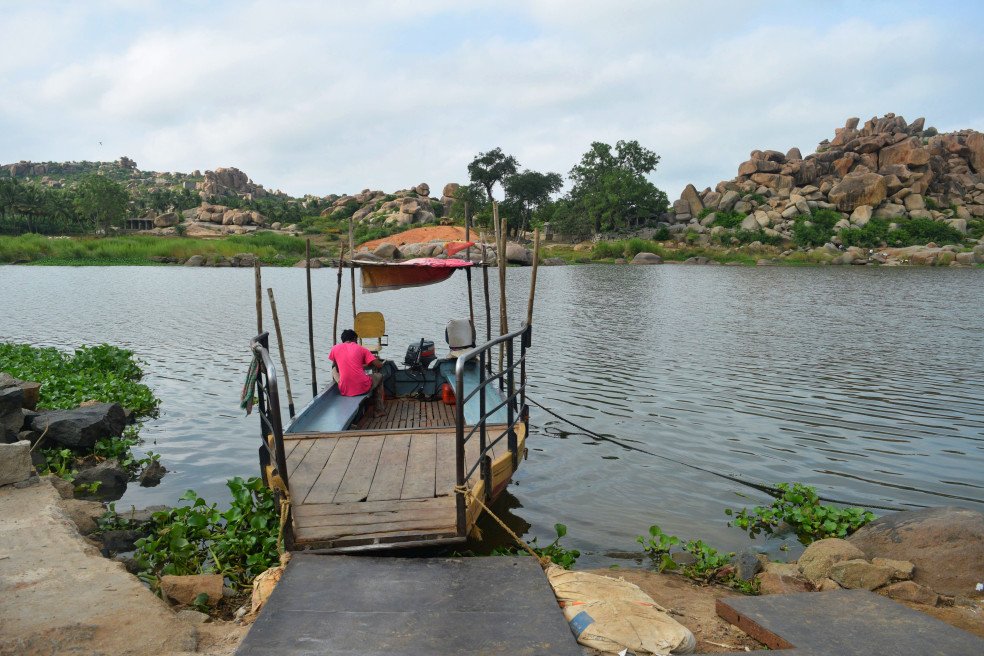
As if the hospitality of this wonderful place hadn’t left us feeling cheery and contented, the next pleasing sight was a bunch of school girls with sparkling eyes and bubbly smiles, too keen on getting captured in our cameras. What kind of photographer wouldn’t want to do that? Haven’t they been blessed with the most innocent smiles that compel you to set your worries aside for a while?
“While we try to teach our children all about life,
Our children teach us what life is all about.”
~Angela Schwindt
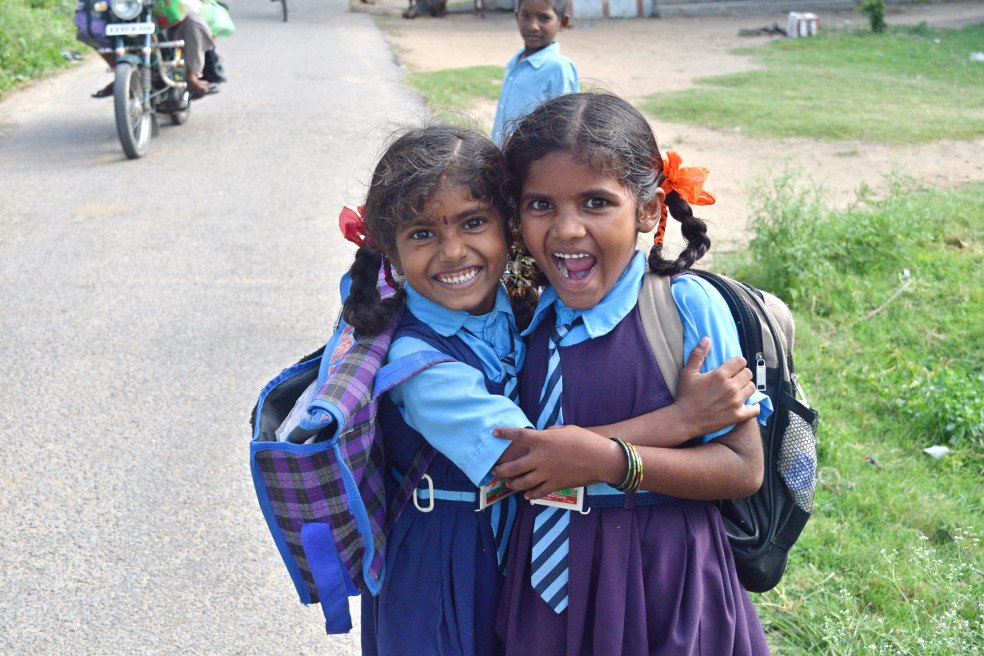
So, we walked towards our cottage that we had booked in advance. The sun was getting a little harsh, but the magical simplicity of the place was over powering the rest of the feelings.
Within a few minutes, we were facing our cottage entrance and were extended a warm welcome by the manager, Siraj. Some people just seem to have it in their smiles. This guy won our hearts with his jovial nature. We couldn’t be happier than this. Right since the start of our journey, we were being astonished by the sweet little things that were happening with us. This guy had earned himself a place in our good books.
The cottage was shown to us. Honestly, the first thought that popped up in my head was, “Why were we going to be here for a meager 4 days?” I could have lived there until I resolved my inner conflicts and returned back home a different person.
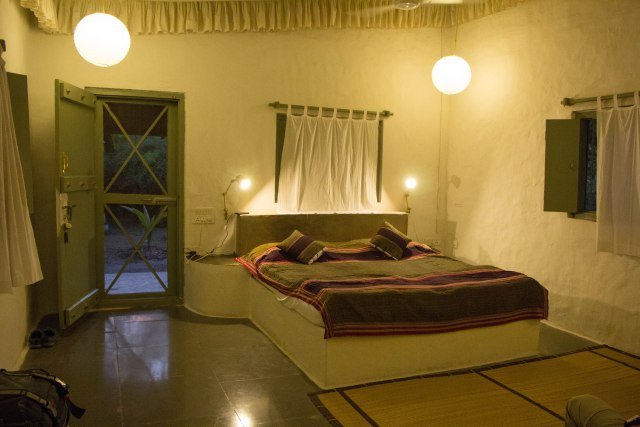
We were in no mood to relax. We took a quick shower and stepped out as we were determined to not miss out on any of the magnificent sunsets that Hampi had to offer to us in our 4-day stay.
And then, the dreamy village-walk through Anegundi happened. We headed towards the Chintamani temple lakeside for a quiet time of our own. Children smiling happily, waving out to us, saying “Hello” in a typical accent accompanied us through out the way.
The white washed temple walls took us back to the bygone era. The sun setting down behind the temple imparted it a very godly look.
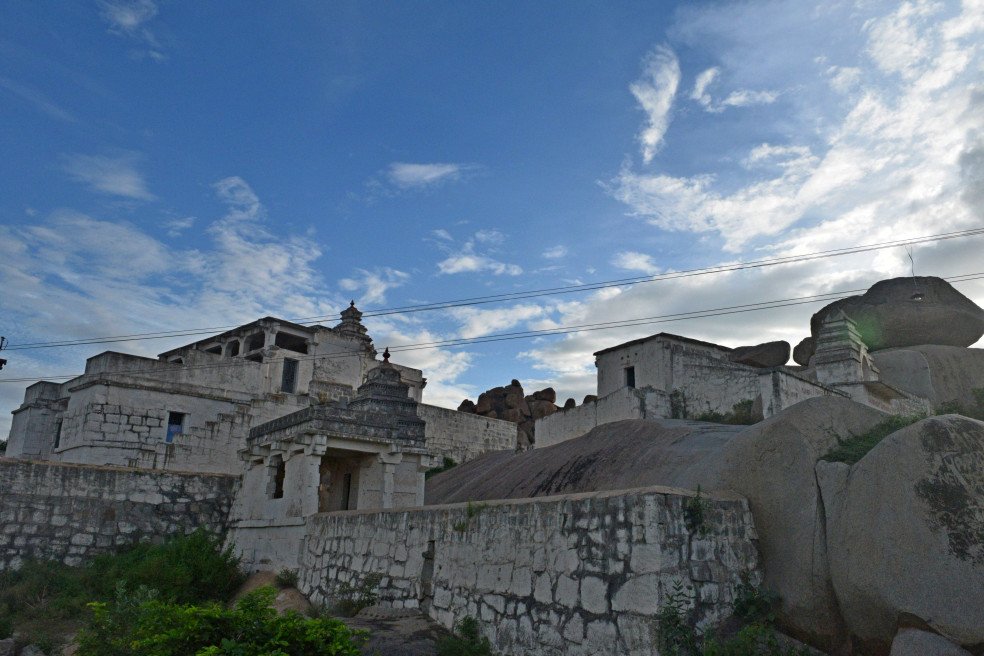
A troop of monkeys were spotted relaxing over some boulders, they were too far for us to be able to take a clear picture, but I managed to capture this one.
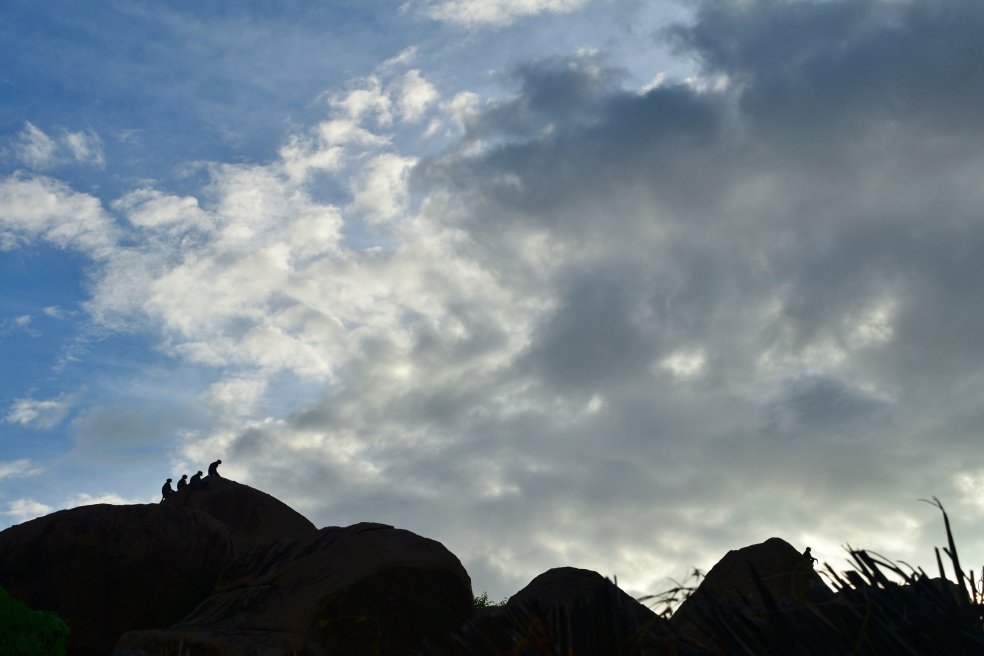
Men clad in saffron clothes were found by the riverside offering their daily evening prayers. Their saffron against the blue skies was a beautiful sight.
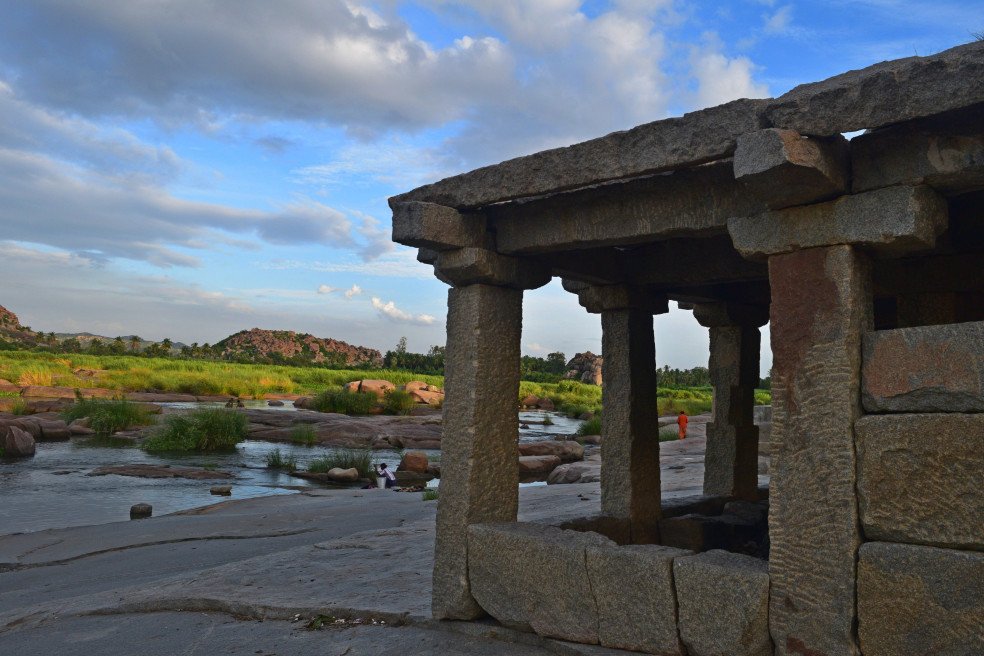
The sunset happened and the night brought with it a thousand dreams for a promising tomorrow. Time does fly when there’s happiness and contentment in your heart.
So, even before the golden sun rays fell upon our beautiful cottage the next morning, the chirping birds awoke us. The wonderfully rustic terrace of our cottage invited us for a session of yoga and pranayama. We couldn’t have let this opportunity go and honestly when we began, with each inhalation our hearts lifted closer to the sun. The body felt light, the mind felt relieved. What a sublime way to start off the day!
Later on, a sumptuous breakfast was served, the taste of which, lingered on for a really long time.
Our first stop was supposed to be Vittala temple, the extravagant architectural showpiece of Hampi.
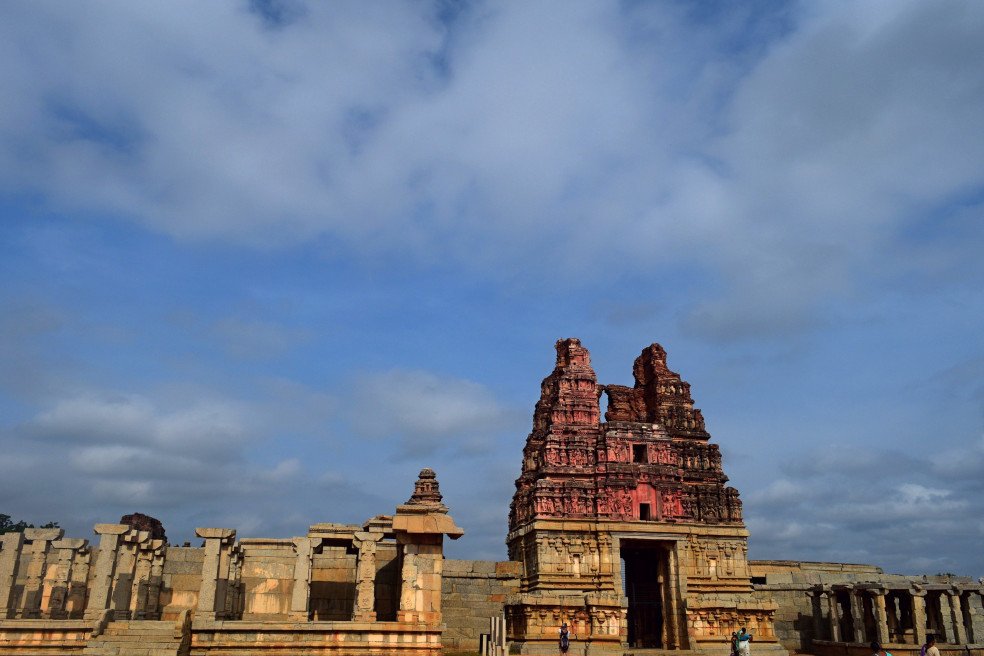
The interiors of the temple passed on some healing vibes, the musical pillars, another highlight of this masterpiece, left us mesmerized.
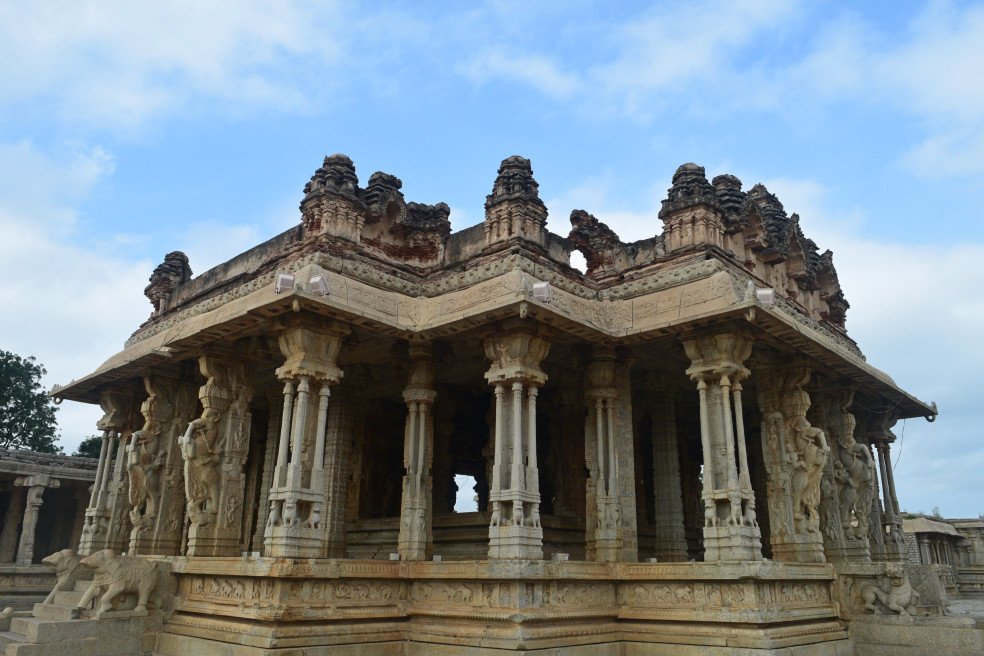
The 56-odd musical pillars, out of which nine are functional, produce melodious and feet-tapping tunes. Surprisingly, the pillars are rock solid and not hollow, as they would look. All these facts only go on to portray the skills of the stone mason who could discern the sound probability while cutting the stones to desired sizes and shapes, and all this without the use of any fancy machinery and equipment!! What a marvel!
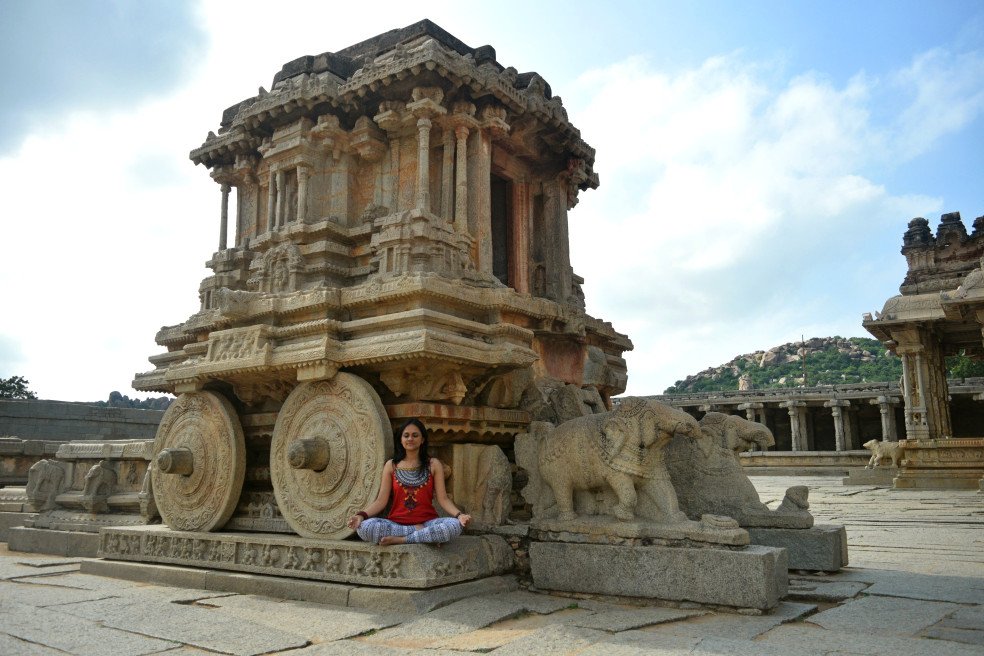
The other highlight is the Stone Chariot built with many giant granite blocks. The joints of the blocks are smartly hidden in the carvings that adorn the Stone Chariot and due to this it appears as a monolithic structure.
I was walking, seeing around, worshiping the beauty of the place when I remembered reading this really inspiring quote.
“Adventure is allowing the unexpected to happen to you. Exploration is experiencing what you have not experienced before. How can there be any adventure, any exploration, if you let somebody else – above all, a travel bureau – arrange everything before-hand?”
― Richard Aldington, Death of a Hero
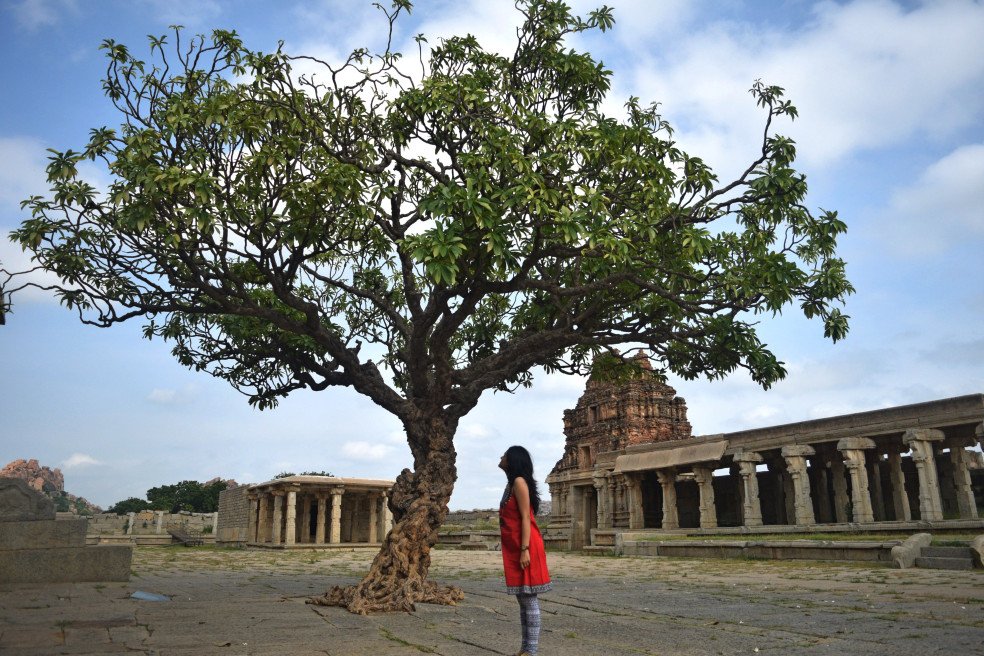
And so, that exactly, is the beauty of traversing places and unleashing the mystic elements all by yourself, admiring the beautiful faces and the sensitive people whose hearts are filled with compassion.
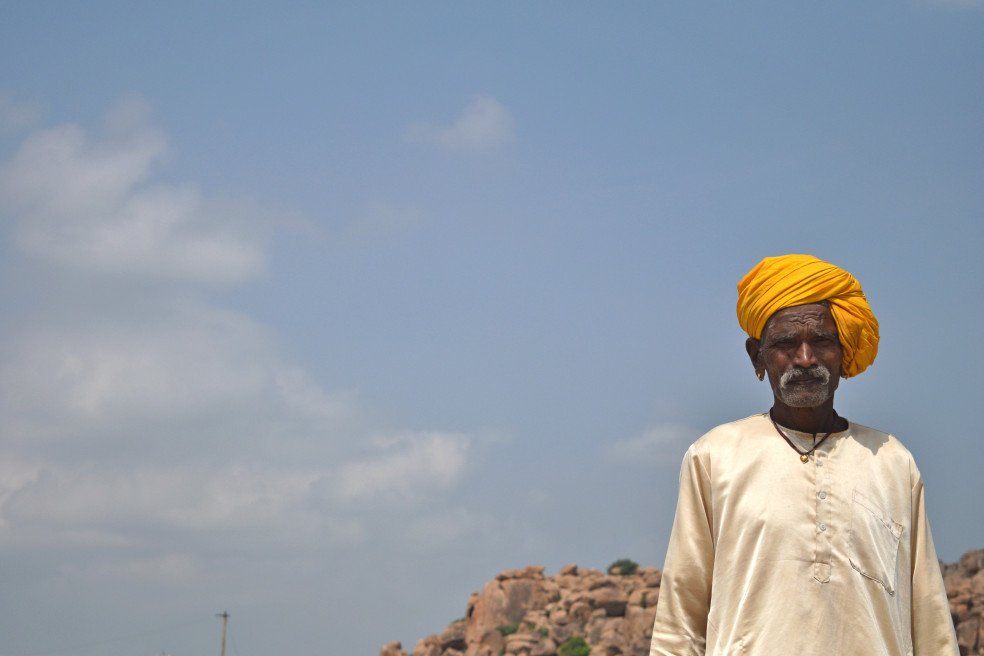
What happened next, was a slightly arduous walk through boulders and rocks, like some sort of a treasure was hidden deep within them. We had a tough time crossing them to reach out to the “Reclining Vishnu”, something that we were extremely inquisitive to see. A little more time spent struggling and trying to walk in the scorching Hampi sun, and there we were, with the hidden treasure right in front of our eyes. So, this was located at the north end of the Courtesan’s Street facing the Achyut Raya’s temple, to be precise.

This long image of Vishnu portrayed with four arms is in a reclining posture on the coiled body of the cosmic snake Anantha.
We proceeded towards Achyuta Raya temple that was now a few minutes away from where we were. Our feet had exhausted but our spirits hadn’t dampened. We juiced ourselves up to regain lost energy, rested for a while and continued to walk until we reached our destination.
Consecrated in AD 1534, this temple is an example of Vijayanagara style temple architecture in its most advanced form than any other temples in Hampi. This was one of the last grandiose temple projects executed in the capital, before the fall of the empire.
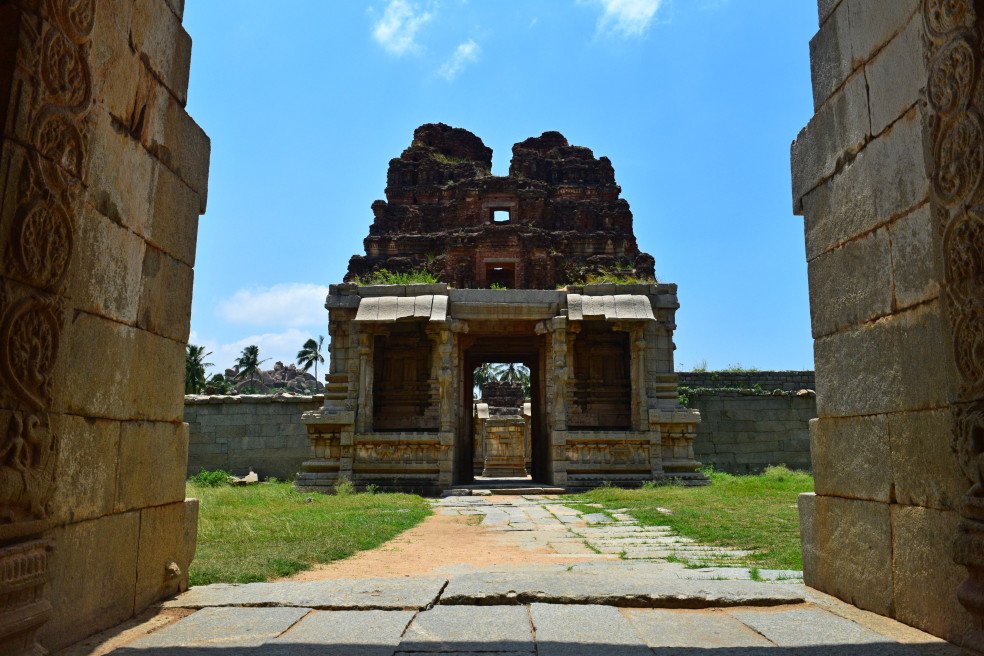
The temple dedicated to Lord Tiruvengalanatha, a form of Vishnu , was constructed by a high officer in Achyuta Raya’s court and hence the name.
We could have gone exploring Hampi forever, each stone having it’s own story, unlocking every mystery would take nothing less than a couple of months.
Scorching sun, perspiring bodies and tanned skins. If you are one of those who cannot tolerate the harsh sun, afternoon wandering in Hampi should be given a miss. If you have little time by your side, and you have no alternative but to utilize every minute of the day, best you can do is to carry your caps, scarves and lots of water bottles to keep you hydrated.
As we walked further, we figured out that we were approaching one of the most glorious sites of Hampi, the Virupaksha Temple. Built somewhere between 9th-10th century, the temple, through the eras, entwined with Hampi’s soul, is its crowning glory today.

One of the most widely revered temples of southern India, Virupaksha Temple is dedicated to Lord Virupaksha, an avatar of Lord Shiva and the patron deity of Vijayanagra empire, and Goddess Pampa, Goddess of River Tungabhadra from whom Hampi gets its name. It is the only temple in Hampi which has a deity for worship because it wasn’t subjected to destruction, though a lot of other aspects of the temple were destroyed and the missing chunks were later replaced with artwork, ceiling paintings and other additions including the gopurams’ towers.
A beguiling aspect of the temple, is the inverted pinhole image of the gopuram cast on one of its inner walls. The other chuckle some feature is a troop of chattering monkeys that’ll surround you in the interiors of the temple. And if you happen to visit the temple in December and February, the temple comes alive with a different kind of chatter due to the temple festivals.A breathtaking view of the temple from atop the Hemakuta hill, Hampi.
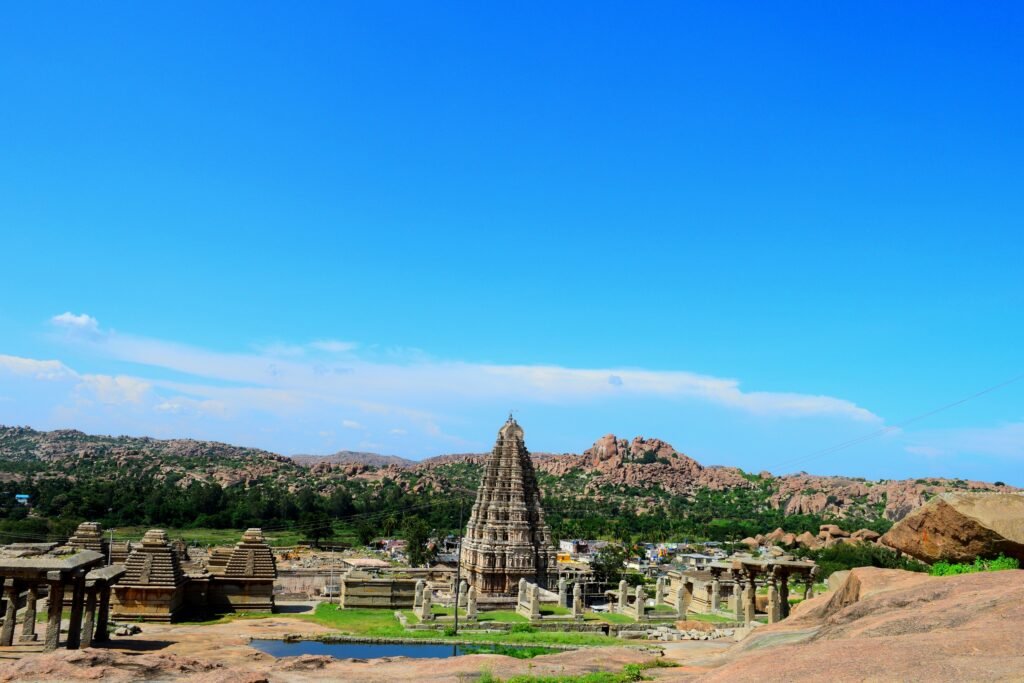
” A speck inside eternity
I stared into the blue
Don’t know where I am going
Don’t know where I belong.” ~ ♬So Lost by Advaita.
The lyrics of this composition that played in my music player, gave wings to the mind, flight to the imagination and life to everything around us. The day ended and we had the most sound, undisturbed sleep that night.
The morning that followed was a cheerful invitation for more wanderlust, more rambling. The weather was perfect, the sun had a little mercy on us and it remained cloudy for a while. Quite a relief!
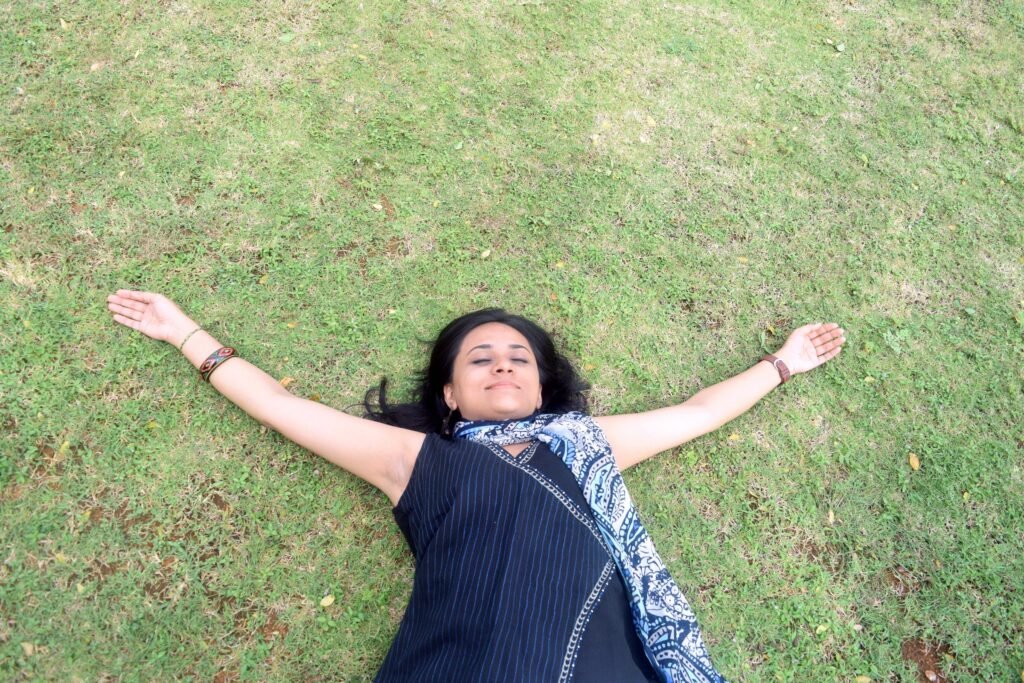
The traveler in me felt joyous, the scent of the green grass was intoxicating. I gifted myself a few moments of solitude. The sky hugged me, the wind whispered stories in my ears, such a delightful experience!
As we walked ahead, we came across the Queens’ bath, the first ruined structure one would see when one enters into the Royal center from the Kamalapura-Hampi main road. For some mysterious reasons this was called as the Queen’s bath. But in all probability this was a royal pleasure complex for the king and his wives.
Then came the Pushkarni Tank of Hampi, the one that was built in the 15th century.
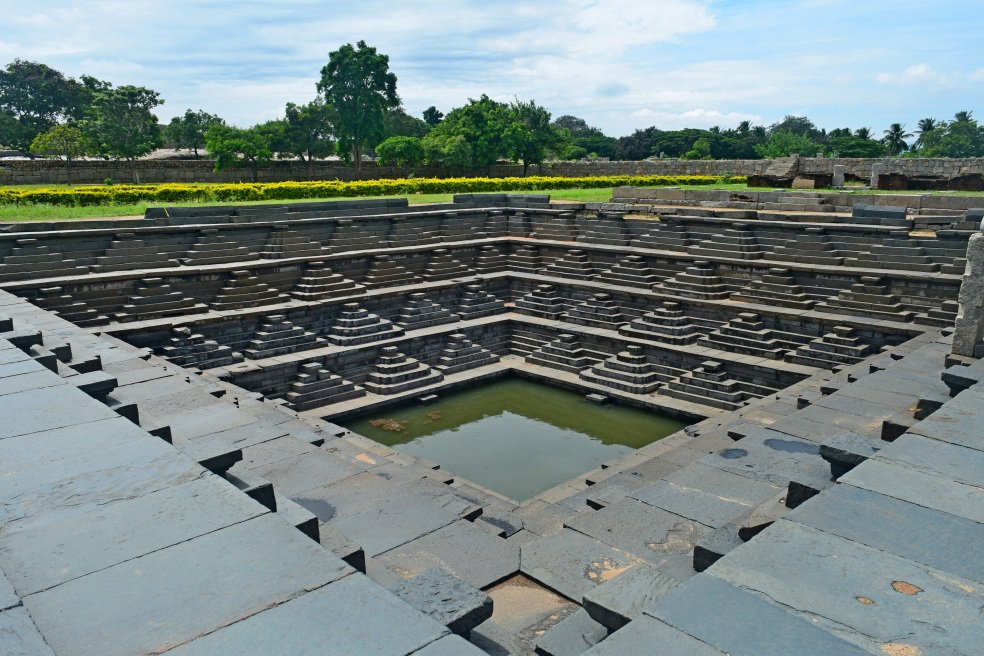
The Pushkarni Tank or the stepped well is a photographer’s gold mine, and given the perfect lighting conditions, we couldn’t have asked for anything better. But if you’ll try to step inside the stepped well, the security guard is sure to warn you, so beware! This square tank is said to be a startling discovery in the recent times, it is heavily influenced by the Chalukya architecture and is a beauty in itself. Imagine the skills of the artisans and masons who, without the use of any fancy equipment and machinery, during those times, gifted these intricately designed wonders to this world.
Next up, the Krishna temple was built by King Krishnadevaraya in 1513 AD to celebrate the conquest of the eastern kingdom of Udayagiri or Utkala (in the present day Orissa state).
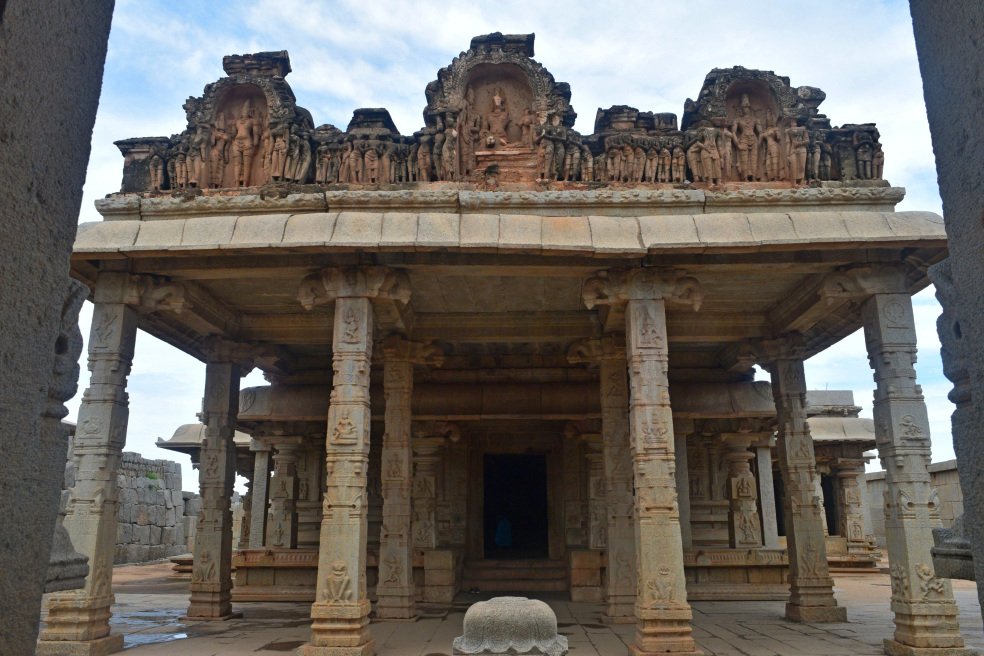
Spectacular carvings with the Yalis (mythical lions) on the pillars, this is one of the few temples that have a bundle of stories carved on the walls of the tower. If you are looking for a beautiful top view of the temple, you could savor that from atop the Hemakuta Hill.
I paused my thoughts for a moment, sat down inside the temple and wondered what it must have felt like to be meditating there during it’s glorious days. The deafening silence teleported us to a world devoid of anxiety, heartaches and pressure. My daily dose of yoga also worked as my healer at that moment.
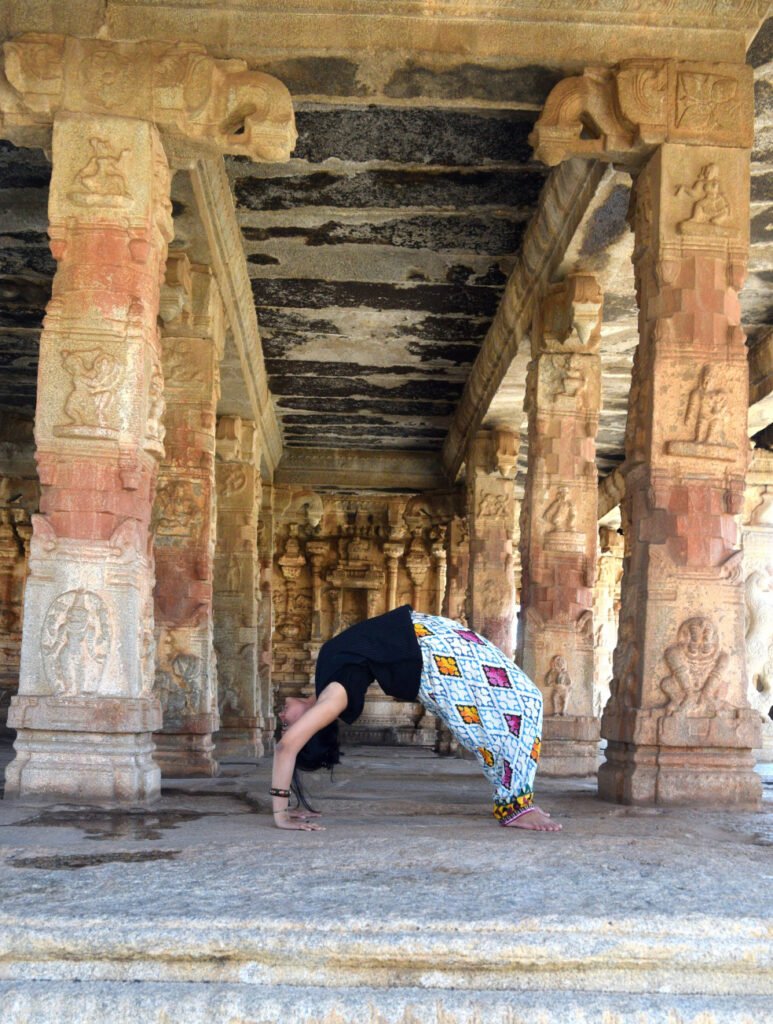
Yoga, an ancient but perfect science, deals with the evolution of humanity. This evolution includes all aspects of one’s being, from bodily health to self realization. Yoga means union – the union of body with consciousness and consciousness with the soul. Yoga cultivates the ways of maintaining a balanced attitude in day to day life and endows skill in the performance of one’s actions. ~~
B.K.S. Iyengar
A little ahead, and we came across the most striking compund of Hampi, the Zenana Enclosure which happened to be the private place for royal ladies of Vijaynagara empire and the Lotus Mahal being one of its highlights. Absolutely splendid play of light, shadows and adding to its beauty were those spotless blue skies!
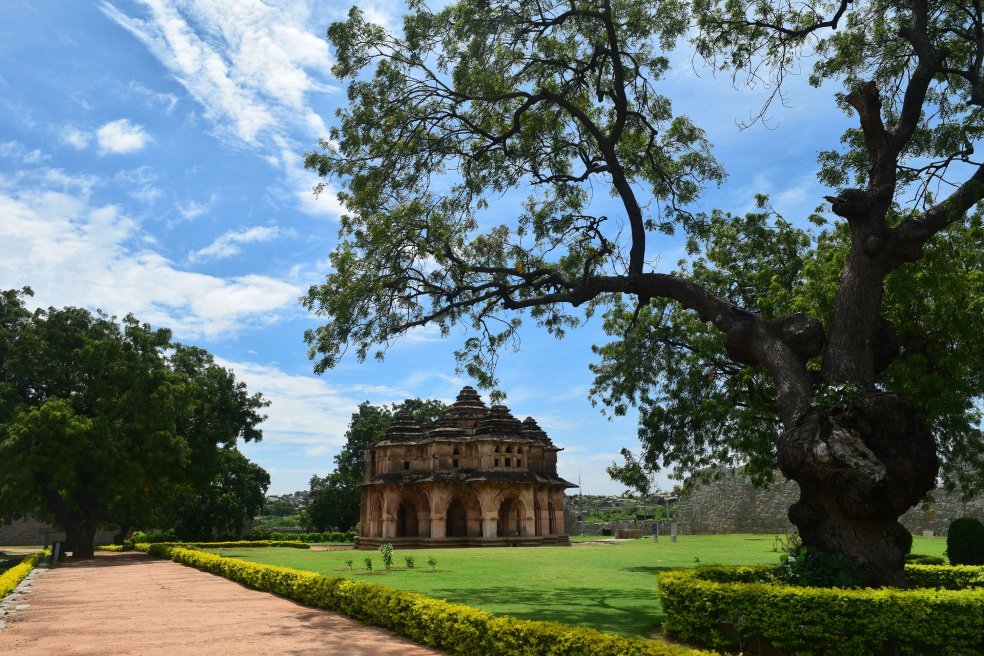
The enclosure is a recumbent compound with tall walls surrounding it on all sides with watch towers to keep away trespassers.
Walk in from the door ahead and you’ll find yourself facing one of the most royal structures inside the enclosure, the Elephant Stables.
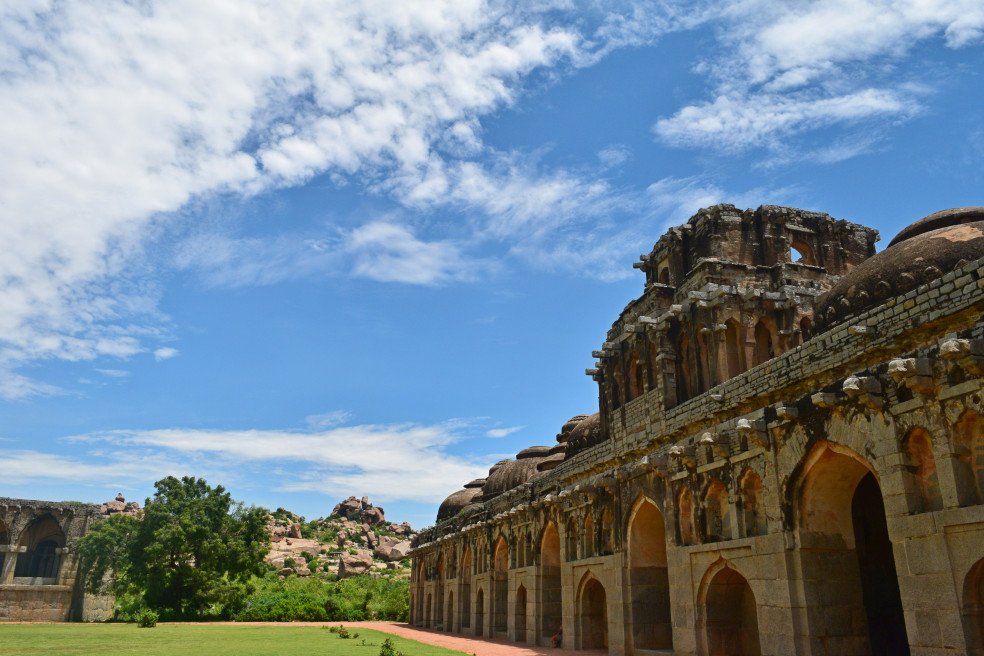
This long building has 11 domed chambers which were used to park royal elephants.The center one is the biggest and decorated. No wonder, Hampi was said to be one of the richest and largest cities in the world during it’s prime.
So many engrossing stories, so little time, we were at the verge of finishing the Hampi escapade before we could begin exploring Anegundi to the fullest the next day.
Hemakuta Hill which was covered next, had clusters of temples, which, due to the architecture are mistaken for Jain temples.A number of temples located on the northern end of the hills are made in what is called the Trikutachala style. You can find a series of such temple complexes scattered all over the hill top.
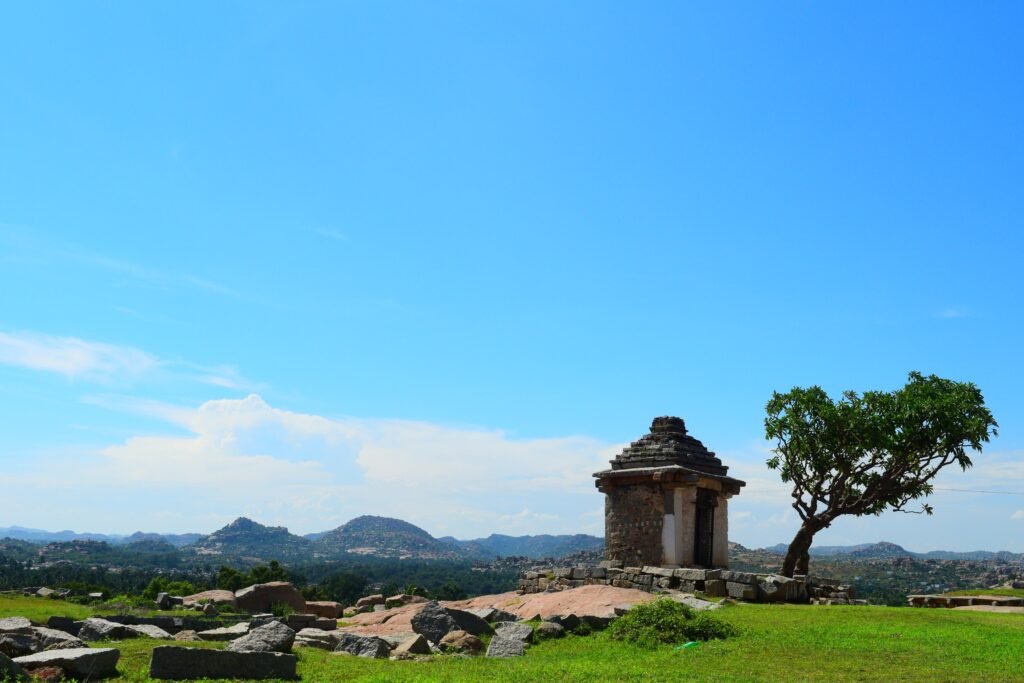
For our last sunset at Hampi, we chose the Matanga Hill. On the tougher side with regards to climbing, as against the rest of the hills of Hampi, this hill offered an astounding view of the magnificent city of Hampi.
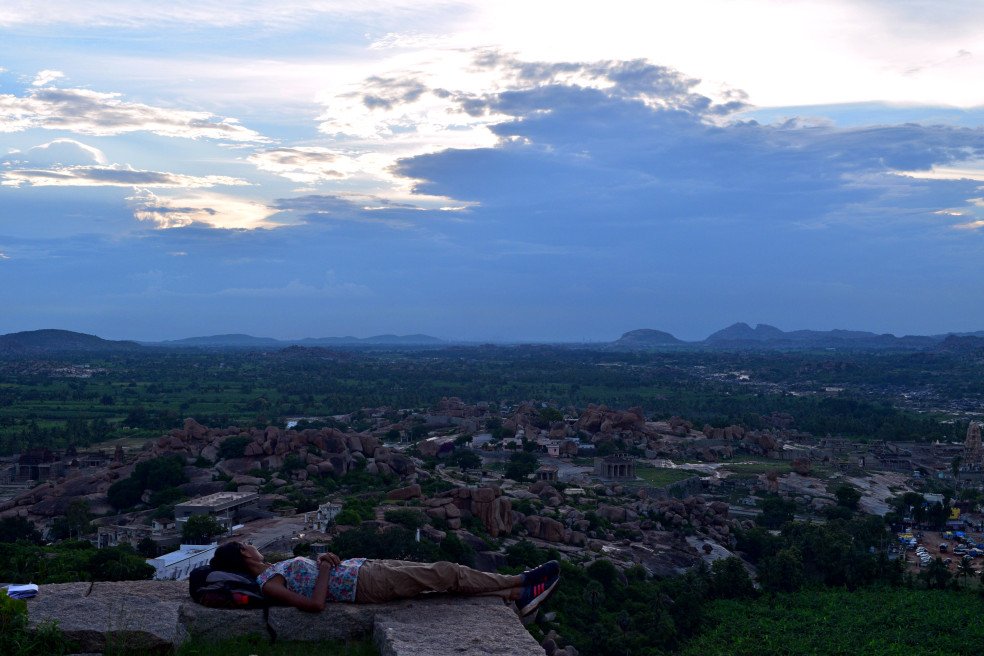
“and we laugh and laugh and
all I know is
at this moment I feel like
I can do anything I want
and be anyone I want
and go anywhere on the globe
and still call it home”
― Kirsten Smith, The Geography of Girlhood

With every moment, we got richer, as we sought other lives, other souls, other places.
It was our last evening in Hampi and we were pleased and happy. Every corner of Hampi was explored, mysteries were solved.
And then, we finally managed to capture a portrait of the two of us along with Siraj, our manager, without who’s assistance, this whole trip would have been but a dream.
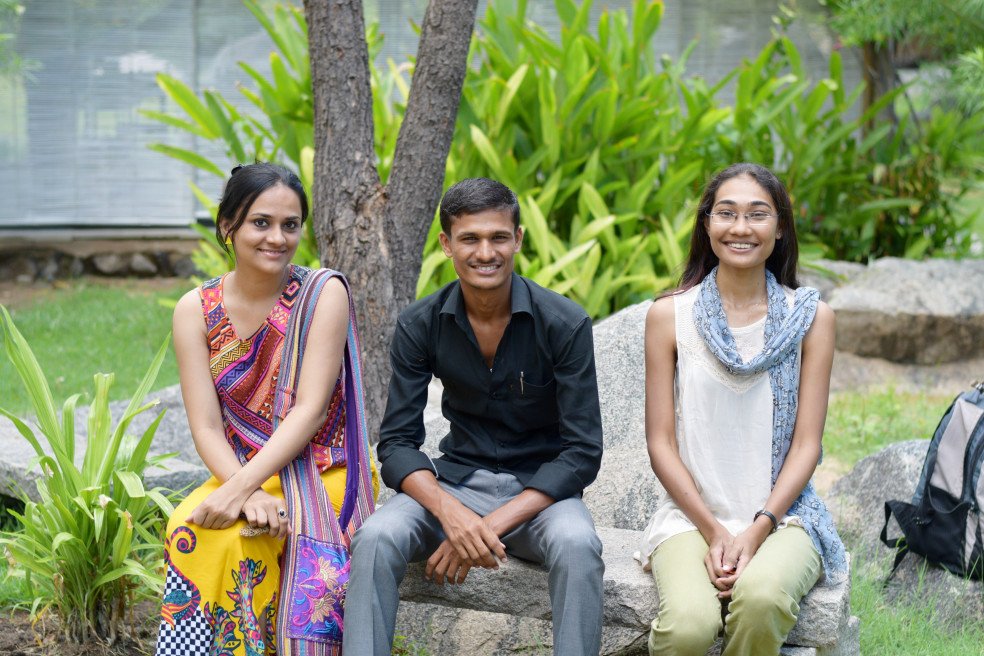
Hampi is a world of it’s own, magical, bewitching and full of mystery. Go there to feed your cravings of wanderlust and you are sure to come back home all changed.
“Lets Just Go, And Not Come Back For A While.”
DISCLAIMER: The author is solely responsible for the views expressed in this article. The author carries the responsibility for citing and/or licensing of images utilized within the text.
